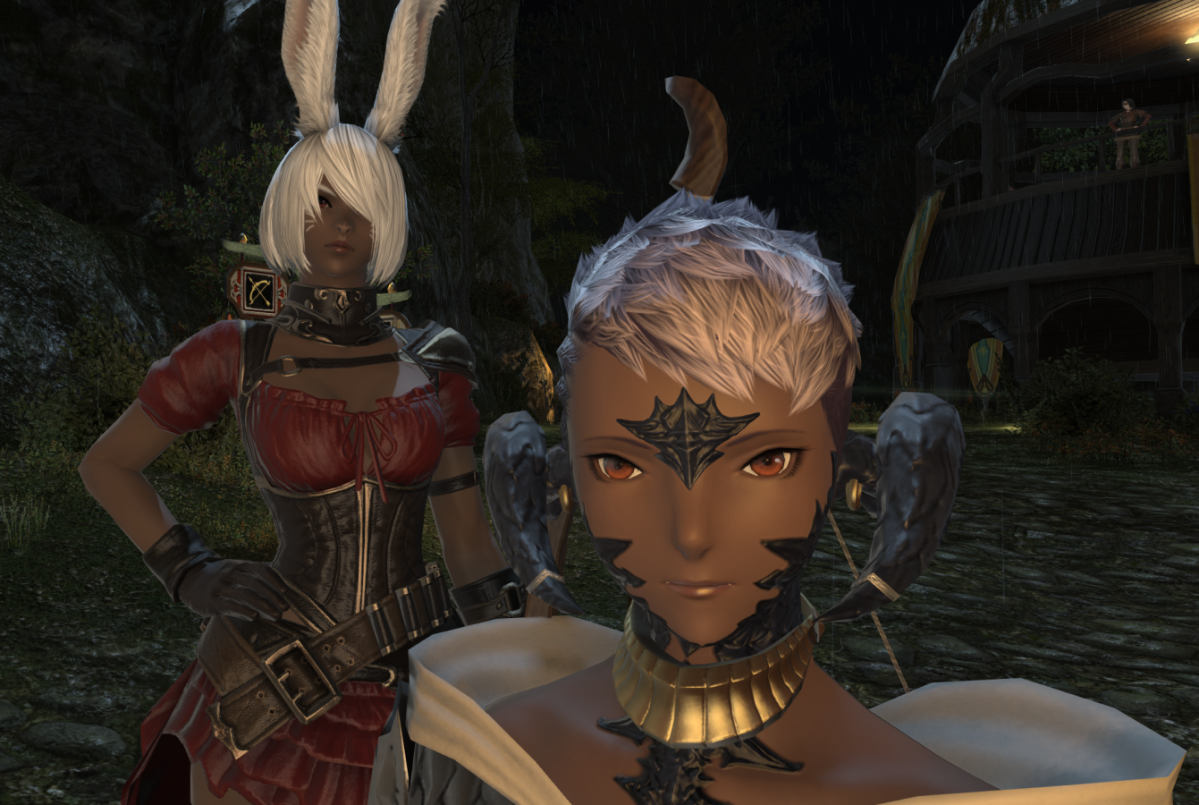On November 2, IGN published an interview with three directors and one producer—Naoki Yoshida—of the 16th installment in the Final Fantasy series. The interview covered a number of topics regarding the upcoming game, from questions on how Final Fantasy XVI will game with a Mature rating to whether women and people of color might play roles in the story. To that last point, Yoshida gave a long cop-out answer that isn’t new—or true.
You can read the full six-paragraph response, but it’s really a long-winded way to say “no.” One part that summarizes Yoshida’s thoughts well is the following statement:
Ultimately, we felt that while incorporating ethnic diversity into Valisthea was important, an over-incorporation into this single corner of a much larger world could end up causing a violation of those narrative boundaries we originally set for ourselves. The story we are telling is fantasy, yes, but it is also rooted in reality.
Ah, yes. Including people of color as main and supporting characters in a game with magical powers and where someone in my party—featured in the image above—rode chocobos (giant birds that I still call “the chickens”) and a slick, contemporary car in the same gaming session would be too unrealistic … It seems like Square Enix and the people behind Final Fantasy just don’t want to include Black and brown people where they don’t “have” to.
While individual players can customize their characters (in ahistorical outfits), Final Fantasy XVI‘s story will still be very white and dominated by men. This is a continuation of the trend of allowing players to opt into racialized characters rather than presenting them as an important part of the story. I can’t believe that we still have to repeat this in 2022, but there were non-white (by today’s standards) people in Medieval Europe.
CC: Game of Thrones, Braveheart, and more
As a reminder, the Middles Ages is the period from the fall of the Roman Empire (late 400s CE) to the Renaissance in the 1400s. Sometimes referred to as the “Dark Ages” because so little was written down (said to be a mark of intellectual and cultural decline, though it really isn’t), this time period has influenced video games (like Final Fantasy), movies, books, and other media—sometimes realistically, but oftentimes not.
Because there’s so much information missing, anachronisms are often utilized for the fluidity of the story and to not make the characters seem too strange to an audience about a thousand years later (a.k.a. a “Theme Park” version of history or place.) These are things like the kilts in Braveheart existing 400+ years too early or everyone in a large region sharing singular cultural values, like how they practice their faith. Almost all bras/bustiers in almost any historical movie ever, whether it’s from 500 BCE or 1960, will be shaped to contemporary sensibilities. The mainstay exception is, of course, women in positions of power and people of color existing at all—ever.
@blackgaycomicgeek #greenscreen The anti-blackness continues to be strong and it’s ANNOYING! #FinalFantasy #gaymer #NaokiYoshida #gaming #gamer #racism #fantasy #BlackFantasy #BlackGayComicGeek #SafeGayven ♬ original sound – BlackGayComicGeek
This TikTok breaks down many of my issues with Yoshida’s statements well. Not only does Michael note that there’s a long history of Black and brown people in Medieval Europe (as everything from enslaved people and merchants to royals), but also, this is Final Fantasy—freedom is in the name. Michael and the people in the comments bring up the many ways people of color influenced Europe, such as Shakespeare’s Othello and the Moors.
This discussion of racialized Arabs, Black people, South Asians, and more existing within Europe’s ever-in-flux “borders” has been in public discussion for over a decade. However, the fact that most of contemporary Europe (all the way to Britain) was under the same leadership as North Africa and West Asia before the Medieval Time period even began should tell you enough.
The popularity of Westeros and Essos in the world of Game of Thrones and the continued weaponization of European history among internet Nazis (both in the 2010s) certainly influenced journalists’ (and the general public’s) interest in uncovering these hidden histories. Meanwhile, the casting of Dev Patel in The Green Knight continued the conversation of how Arthurian legends are not as white as first believed.
The will to handle with care
In Yoshida’s longer response, he seemed fully prepared to push back on this question. He goes on to later say that, even if they wanted to, including non-white characters could cause more problems.
In a game that, by design, allows players to experience that conflict and struggle firsthand through dynamic, realistic battles, it can be challenging to assign distinctive ethnicities to either antagonist or protagonist without triggering audience preconceptions, inviting unwarranted speculation, and ultimately stoking flames of controversy.
This is true of any creative story decision, so I’m not sure why he would think not to care about how each character may be perceived based on external biases. Every character should be handled with care (especially the bad guys), and audience perceptions taken into consideration—not coddled, but challenged. Yoshida’s response is also why, despite the want for more stories that show the full breadth of storytelling from various backgrounds, I’m done pushing for people like Yoshida, Tim Burton, and others to include us. It takes a willingness to do the work, and they just don’t care unless it has the potential to hit their pocketbook.
On an individual level, time is much better spent supporting creatives of color who value diversity—not just tolerate it or feel like they need to succumb to it. Systemically, we need changes in the industry that will bring these people forward. Like racialized people in Medival Europe, these storytellers exist, too.
(via @BlackGayComicGeek on TikTok, featured image: Square Enix, Alyssa Shotwell)
—The Mary Sue has a strict comment policy that forbids, but is not limited to, personal insults toward anyone, hate speech, and trolling.—










Published: Nov 29, 2022 01:14 pm